
Step one: Hand wash, rinse, and clean the glass at the same temperature as the beer you’re serving. Next, stick the nozzle of a LUKR side-pull faucet down the dimpled mug, open the tap to fifteen degrees, and start filling the glass at a forty-five-degree angle with foam. When the glass fills one-third of the way with a wet, dense, creamy head, open the tap completely, and while the nozzle touches the bottom of the glass, pour clear beer until you have a foamy pillow touching the rim. Lastly, when the glass is full, close the tap, wait half a second, and remove it without getting any drops into that beautiful foam. Perform this ritual successfully, and you will have mastered one of the most common Czech beer pours—Hladinka.
One of five ways to serve beer in the Czech Republic (although depending on who you talk to, there are really only three), Hladinka includes a glass full of roughly one-third foam and two-thirds beer (the mug on the right in the illustration above).
Yes, foam!
A fierce foe in American drinking culture, fluff on top of beer reigns supreme in the Czech Republic.
In fact, each Czech pour revolves around a different level of foam:
Čochtan – sometimes called neat, no foam, just pretty carbonated beer.
Hladinka – referred to as smooth; roughly one-third foam and two-thirds beer. Fill the mug with foam then beer.
Nadvakrát – referred to as crisp” similar to a Hladinka but you fill the mug with beer first, then foam.
Šnyt – roughly two-thirds foam and one-third beer.
Mlíko – all foam. Should be chugged.
Czech pours are a serious business, more art form than habitual motion.
How serious?
In the Czech Republic, drinking isn’t just about the beer. It’s also about the tapster who poured you that beer.
Tapsters: Prestigious Pride in Pouring Beer
A very proud drinking culture, Czechs tend to favor one specific beer producer and a few certain bars known for the person pouring the beer.
See, each tapster has their own approach—nuances to pouring, presenting, and serving that beer to you.
And it all matters.
People drink one or two brands that they like and “keep on drinking that beer, all the time, every day, the same beer,” says Jan Havránek, Head of International Sales and Marketing at LUKR, who himself regularly frequents the same five places in Plzeň where he knows the tapsters. “It’s the same beer in the same kegs from the same brewery, maybe from the same day…but I’m not going for the brand; I’m going to visit the tapster.”
For the Czechs, the tapster is respected as much as the brewer. If not more.
“In Czech, we have a saying that the brewer brews the beer and the tapster makes it, meaning both of these roles are equally important,” says Havránek.
In America, we often view bartending or serving as a pitstop on the way to a “real” full-time job, whereas the Czechs consider the tapster a well-respected career.
“They take it so seriously…they very much take it to heart,” says Adrianna LaCandia, Territory Sales Manager at Hop & Stuff, a Canadian importer that brings traditional Czech ingredients to North America and runs a government-sponsored trip to the Czech Republic every year. “The tapster is making sure their end of the bargain is perfect so they can pour the best beer for you.”
Pretty crucial in a country that has consumed the most beer per capita out of any country in the world for the last twenty-eight years—181.9 liters per person in 2020 😱. (For context, the United States ranked seventeenth with only 72.8 liters per person, according to Kirin Holdings).
Pilsner Urquell even hosts a Master Bartender Competition to crown the best tapster. A title Lukáš Svoboda earned in 2010. Svoboda, who now co-owns well-known Czech pubs Lokál and Dva Kohouti, started his career in 2004 waiting tables at the famous Prague restaurant U Pinkasů, where they’ve tapped Pilsner Urquell incredibly for the last 180 years.
“I discovered regulars who went for a beer every day, i.e., 365 days a year, and drank at least eight beers a day!” Svoboda wrote in an email to Hop Culture, sharing he tapped 300 liters each shift.
That’s a lot of beer featuring a lot of foam.
Foam = Friend, Not Foe
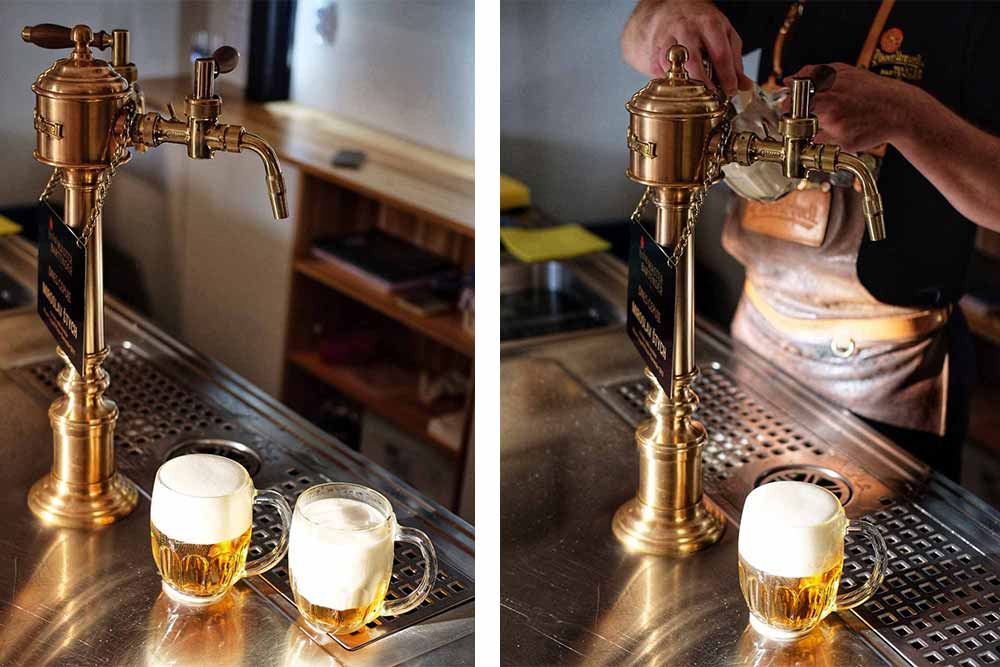
To understand the Czechs pours, you must first appreciate their love of foam.
“No matter who you talk to or where you get a beer [in the Czech Republic], it will come with foam on top with up to half the glass acceptable,” says Eric Larkin, who fell in love with Czech beer in 2018 on his honeymoon to Prague and has made it his life’s mission to respect Czech drinking traditions at Cohesion Brewing in Denver, CO. “They won’t take it back, they won’t listen to you complain about it. This is the way we do it. Move on. There isn‘t even a discussion if you’re a foreigner.”
Why do Czechs fawn over foam?
Well, much like the Czech pours themselves, the answer comes in layers.
A Life Preserver of Foam
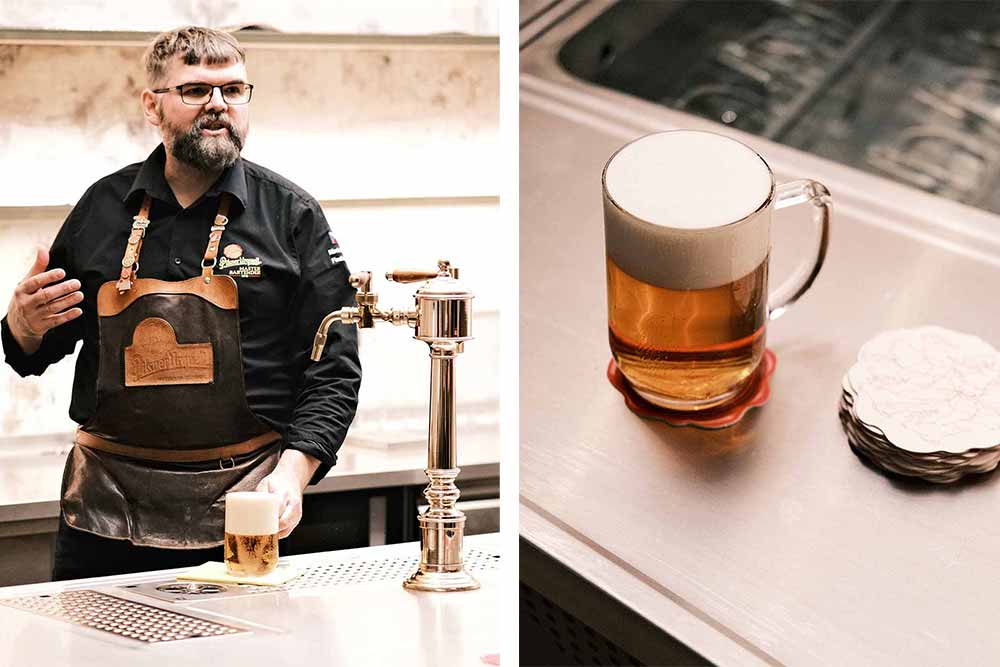
Historically, foam played an essential role in Czech beer production. Back when Czech brewers didn’t fully understand the science behind yeast and brewing, Larkin shares that they used a phrase roughly translating to “God give us luck” in English. “They said it before they brewed [to essentially admit] I’m not in control here… God, please give us luck this will turn out,” shares Larkin.
To ensure beer quality and freshness, the Czechs drank beer as quickly as possible, straight from the source. But they also adopted a belief the foam helped preserve the beer.
Larkin has a theory that he emphasizes is only his own. “I’d love to corroborate with people in the Czech Republic that the quality and freshness of beer was associated with foam because if there was no foam on the beer, you knew it was sour or had turned,” he says.
When speaking with Havránek, who considers Larkin one of the top three American brewers representing Czech beer in the States, he mentioned that Czech pours creating a “pillow of foam is not only for great taste but to work as a cap to prevent oxidization.”
Perhaps not a firm confirmation, but certainly illustrates the idea that foam had several purposes: to protect the beer and to add flavor.
Foam Is Flavor
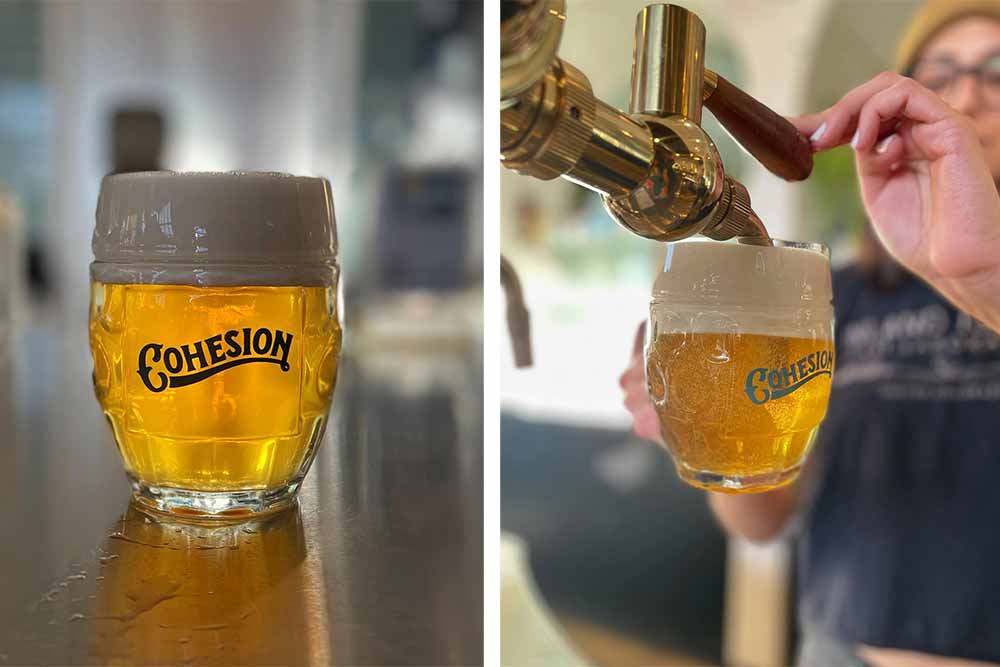
What is foam?
“Foam is made up of different molecular structures and more protein; it has a different chemical composition than the liquid under it, so when you consume it when it’s wet foam…it has different flavors than the beer,” says Larkin.
The key here: a wet, dense foam.
“I think beer with foam tastes better than without…but it’s not foam like foam,” writes Svoboda. “I’m being strict here [because] the foam must be thick, creamy, drinkable.”
In America, we think of foam as the sh**ty, thin head you get out of a keg during a rager at any American university (we’re guessing you licked your finger and stuck it in your red Solo cup to help it dissipate, right?).
The foam on beer in the Czech Republic is very different.
In the Czech Republic, foam can be “really sweet, wet, full of beer…that is tasteful, drinkable, smooth, and has a nice mouthfeel,” says Havránek, who likens himself to a foam pitcher. “Foam is beautiful!”
In America, we fear foam as a sign of sh**ty service, taking up space for more beer.
Which, to be perfectly honest, isn’t entirely our fault. While glasses in the U.K., Germany, and the Czech Republic have a clearly marked line to show you the measure of your beer, we don’t have that in the U.S.
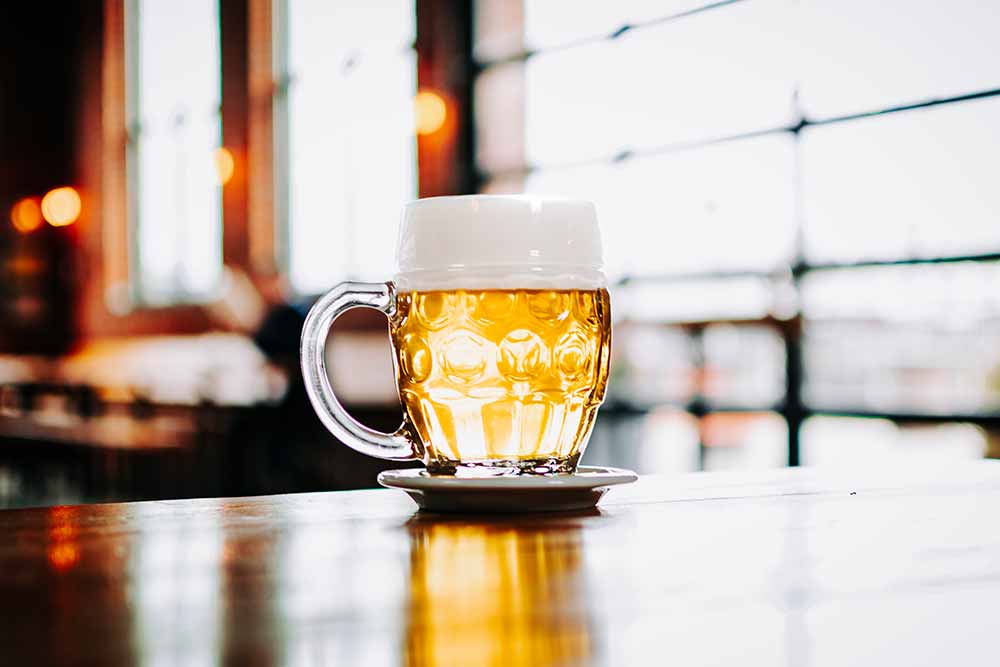
“If your beer is not poured to that line, you can say I’m not getting my full measure,” says Chris Lohring, founder of Notch Brewing, who Havránek praises as not only one of the first five customers to invest in a LUKR faucet in North America but also as the first to understand the culture of the perfect pour, training his staff accordingly. “In the United States, it’s the Wild West, so everything is poured up to the rim to guarantee you’re getting your full measure.”
Americans treat foam like an afterthought; the Czechs embrace foam from head to toe.
“We have a minimalist approach to foam here in the United States,” says Neil Witte, owner and co-founder of Tapstar and Craft Quality Solutions and Master Cicerone, who admits, even after working with retailers for twenty-five years, he still faces challenges getting people to understand the importance of foam on beer. “The Czech pours, [on the other hand], feature foam prominently.”
Larkin equates this foam to what you get on various coffee drinks.
“A cappuccino, a cortado, a latte, an Americano… You have espresso beverages made with varying amounts of foam that all taste slightly different,” he says.
So how do you create this type of wet, flavorful foam?
With the right tools.
By far and away the most popular way today to dispense this foam is with a LUKR faucet.*
*Editor’s Note: For that reason, for this piece, we’re showcasing how LUKR recommends executing these Czech pours with a LUKR side-pull faucet.
What Is a LUKR Side-Pull Faucet? And How Does It Create Fantastic Foam?
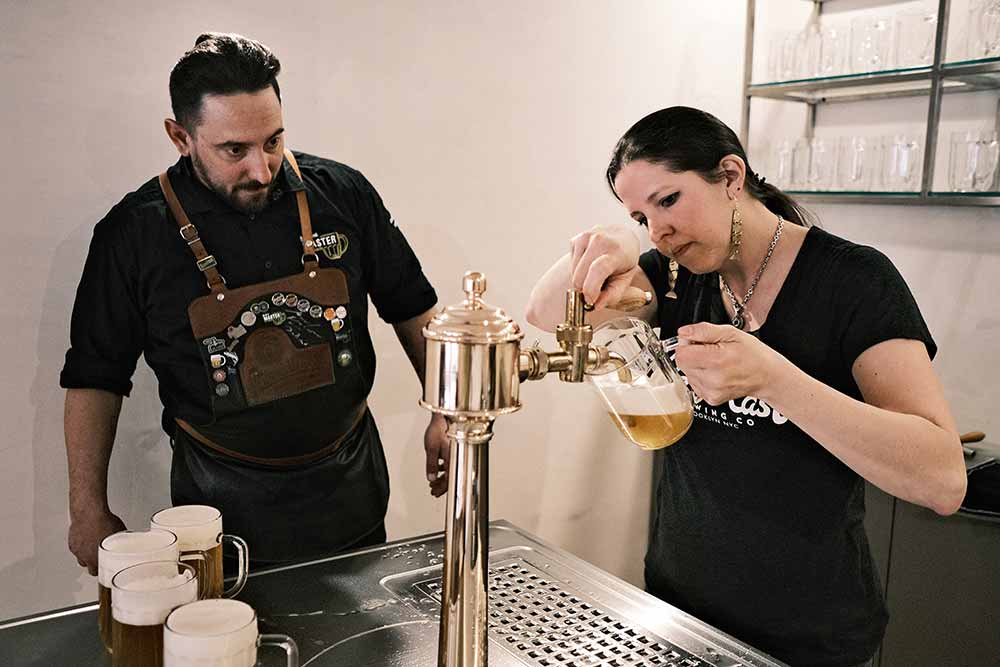
While the Czechs have focused on foam for hundreds of years, it’s only recently that someone invented a specific faucet to emphasize the lather.
In 1999, three Czech brothers released their prototype LUKR faucet. According to Witte, LUKR’s ingenious design contributes to this unique foam structure.
Witte says that, inside the tip of the faucet, a screen filters out any larger bubbles and promotes smaller, finer ones. Combined with a ball valve (as opposed to a plunger valve) that lets you better control the beer flow, that helps create that wet, dense foam.
“These faucets are designed to create a wet, drinkable foam and for fast service,” says Witte, who has imported LUKR faucets into the U.S. for breweries such as Alma Mader in Kansas City, MO.
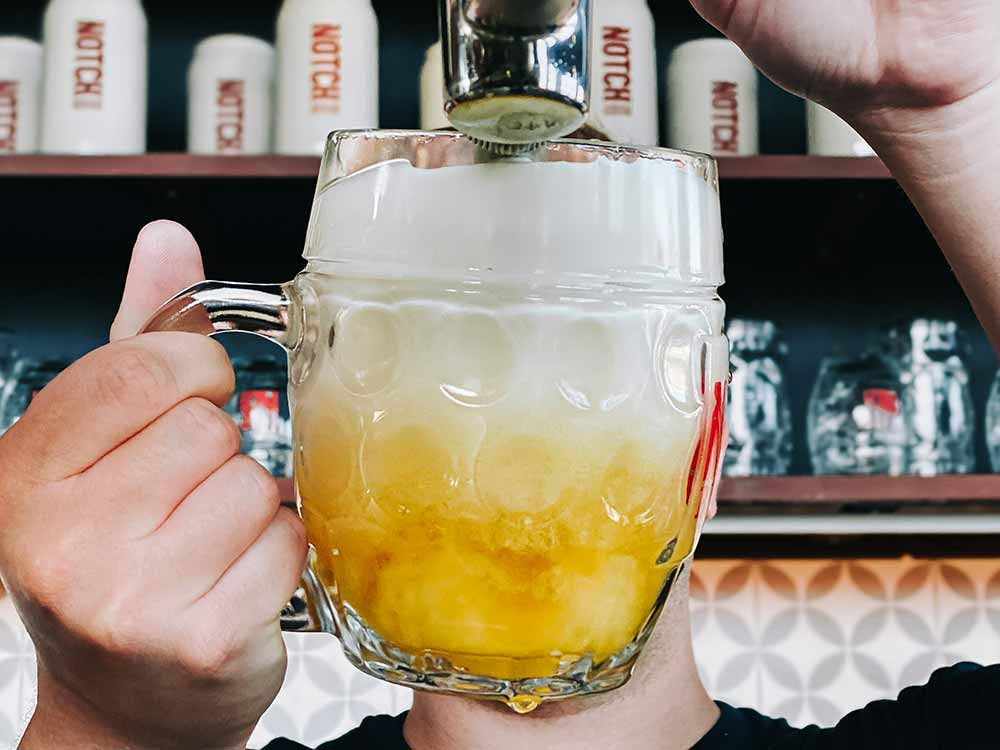
Seven years ago, before Havránek started working at LUKR, you couldn’t find a single side-pull faucet in the United States. Now Havránek has helped bring LUKR to the U.S. You can find these side-pull faucets at breweries including Cohesion in Denver, Human Robot in Philadelphia, Alma Mader in Kansas City, and Notch Brewing in Salem.
But even as LUKR has gained popularity outside of the Czech Republic, education around the different traditional pouring styles has yet to catch up.
Until recently.
Here’s what you need to know.
Before Even Pouring a Drop of Beer
There are a few basics.
First and Above All Else: A ‘Beer-Clean’ Glass
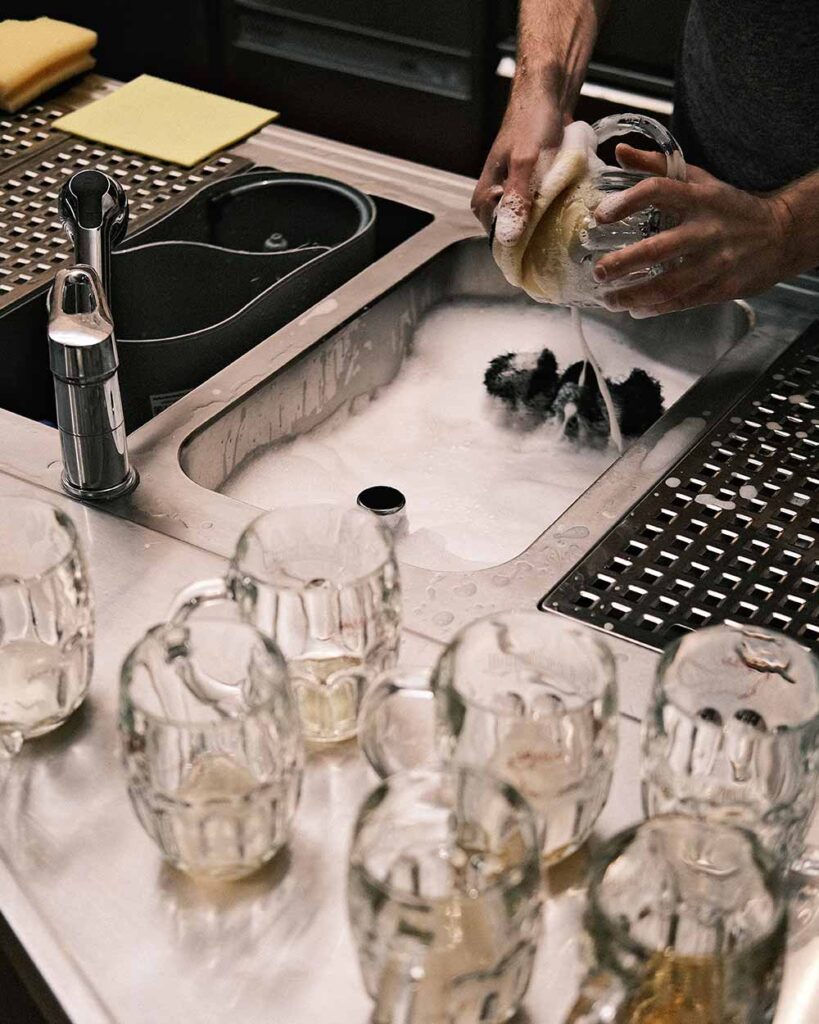
The most critical first step of all Czech pours is to prepare your glass.
“You cannot have a perfectly poured Hladinka, Šnyt, or Mlíko if you don’t have a perfectly clean glass,” says Havránek.
At LUKR’s new training facility in Plzeň, where they teach what they believe is the correct way to pour beer, they hand wash all the glasses with a special sponge and detergent, rinse them, and soak them in a cold bath chilled to the same temperature as the beer.
According to Svoboda, even glasses taken from an automatic dishwasher should still be cleaned by hand before dunking in a cold water bath.
Svoboda even shares that at his pub, Lokál, they invented and patented a specific sink for this process, but you can find a modified version in most Czech bars.
“An important part of a perfect pour is the perfectly clean glass, cold and wet,” says Havránek. Otherwise, the foam will collapse quickly. Additionally, if you’re serving beer on a summer day, as the beer sits in the glass, it will warm up more quickly, destroying the foam. But if the glass is chilled at the same degree as the beer, you can slow the liquid from warming.
“The highest level of service is to turn the mug upside down to show people all the water is out,” says Larkin. Only then can you use that washed, cleaned, and chilled mug to produce any of the five Czech pours of beer.
Second, Understand How to Operate the LUKR Side-Pull Faucet
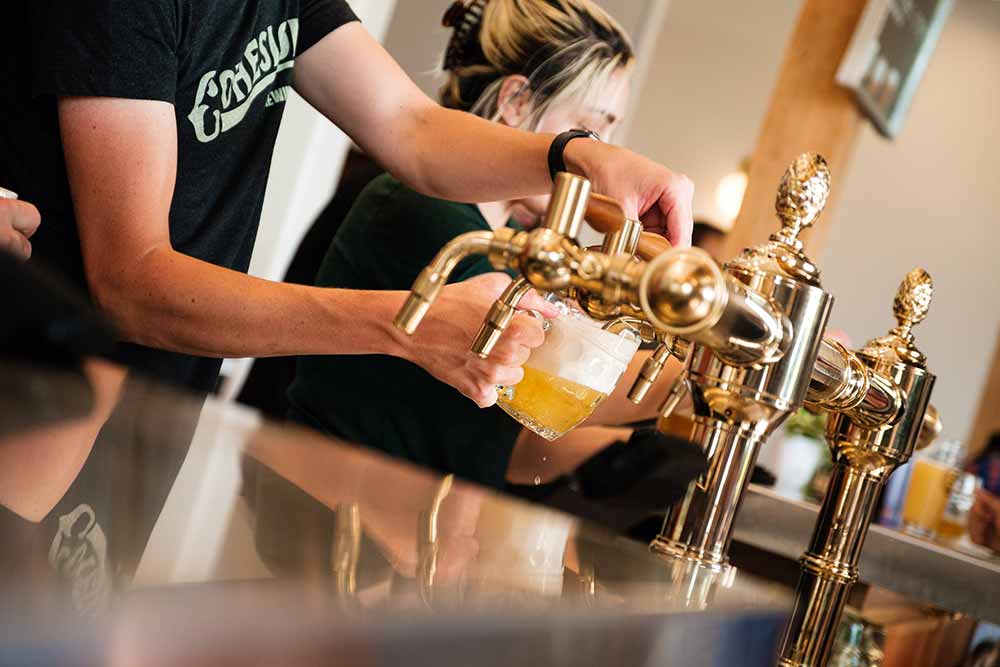
These days most tapsters use a LUKR side-pull faucet to execute the Czech pours.
A LUKR faucet has three basic positions: 1) closed, 2) open at fifteen degrees, called the foam position, and 3) open at full-ninety degrees, called the clear-beer position.
You’ll need to understand all three to pour beer.
Third, Focus on Consistency
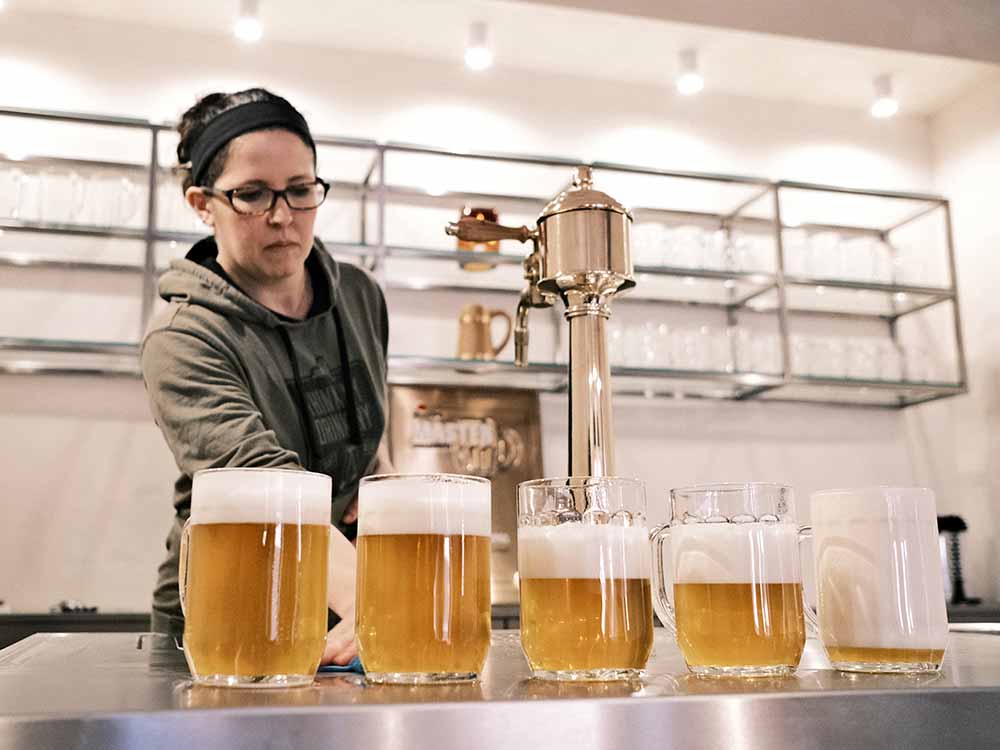
Wild East Brewing Co-Founders Brett Taylor and Lindsay Steen visited LUKR in Plzeň, Czech Republic, in March, becoming the first participants in the manufacturer’s new three-day Czech pour training program.
After three days of intensive training that included pouring more than 150 glasses of the three major styles combined—Hladinka, Šnyt, and Mlíko—in the classroom and even at an actual bar, Steen says consistency is key.
“[LUKR] emphasized that a good tapster sticks to the essentials of the pour…but what’s really important is to be consistent,” she says. “So if you pour a Šnyt, the beer and foam should be all the same across the board.”
The Five Different Czech Pours
Depending on who you talk to there is somewhere between three-to-five ways to pour beer in the Czech Republic.
For instance, those who are a part of LUKR or the major Ambiente Restaurants Group, a collective of highly well-regarded Czech restaurants and bars considered the pinnacle of promoting the proper pour, they’re adamant that the top three Czech pours are only Hladinka, Šnyt, and Mlíko. Those are the only pours they teach, the only ones they execute, and the only ones they believe truly represent Czech beer culture.
“They’re at the top of the game, at the top level in terms of attention to detail, care, and their focus on pouring,” says Larkin. “They will argue adamantly there is a right way to do it and a better way to do it.”
But there are a couple other pours out there, so to give you the full picture we’re sharing a few more details on each.
Čochtan
If you visit the Czech Republic, you might find this pour around.
It’s pretty simple. Sometimes called neat, čochtan includes no foam, just fairly carbonated beer, making it very different from a Hladinka or Šnyt.
Hladinka
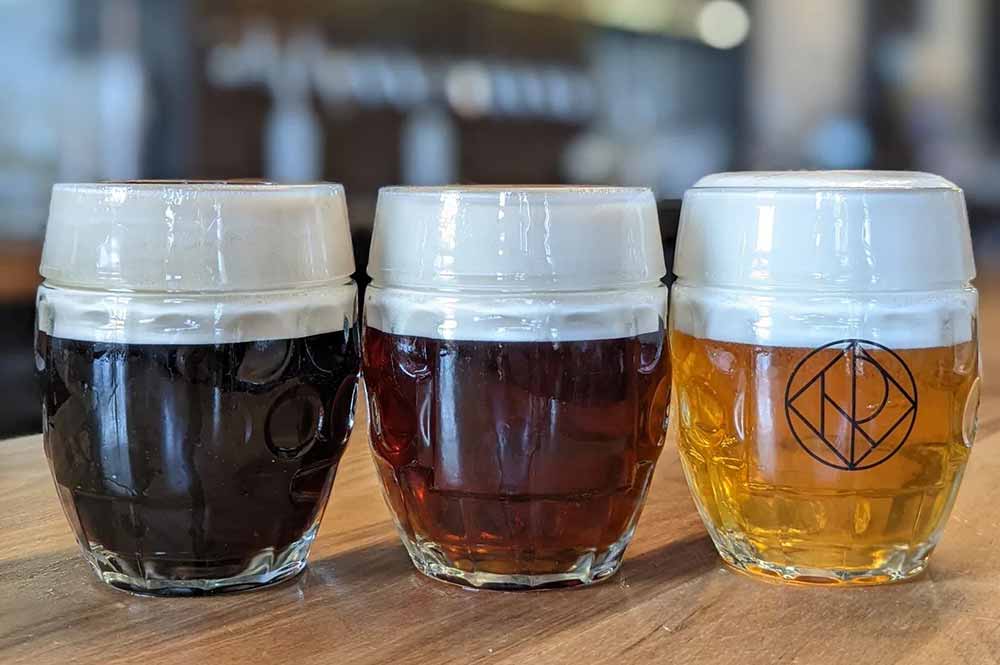
The most popular pouring style in the Czech Republic, if you just ask for a beer in a pub, the tapster will serve you the Hladinka. Both Svoboda and Havránek estimated that Hladinkas makeup between eighty-five to ninety percent of all pours in the Czech Republic.
“This is king, the best of the best methods of tapping in the Czech Republic,” writes Svoboda.
Considered smooth, Hladinka consists of roughly one-third foam and two-thirds beer. All poured in one master stroke.
According to both Havránek and Svoboda, the key to pouring a Hladinka is to create a foam pillow and pour clear beer underneath it.
The name Hladinka, which roughly translates to “levels” in English, came from the rings of dried foam left in the glass after drinking, wrote Svoboda.
To pour a Hladinka, open the LUKR tap to the foam position and let some foam onto the drip tray. You want to flush the pipes first by opening the tap a little. Chances are when the tapster last poured and closed the tap, some residual, now-old foam got trapped.
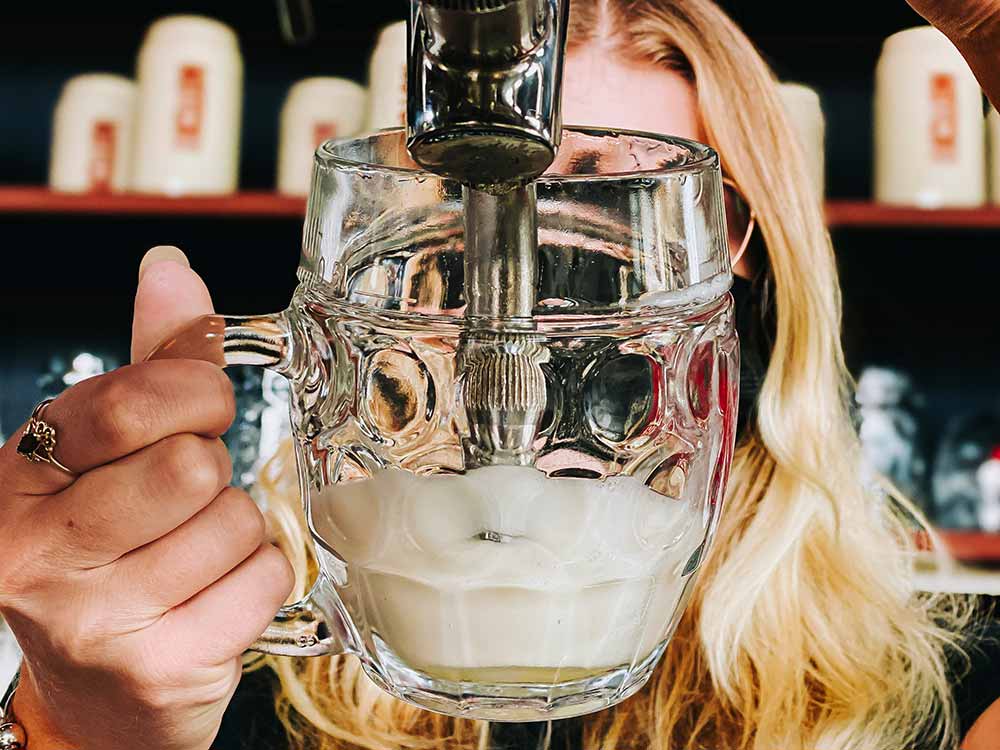
Next, insert the nozzle of the tap to the side of the glass at a 45-degree angle into the foam stream. Yes, this goes against everything about pouring beer in America, so suspend your preconceived standards here.
With the tip of the nozzle touching the glass, fill the glass until you have two inches of foam. From there, open the tap ninety degrees to the clear-beer position and, with the nozzle still touching the glass, pour clear beer under the foam pillow, slowly straightening the glass until it’s full.
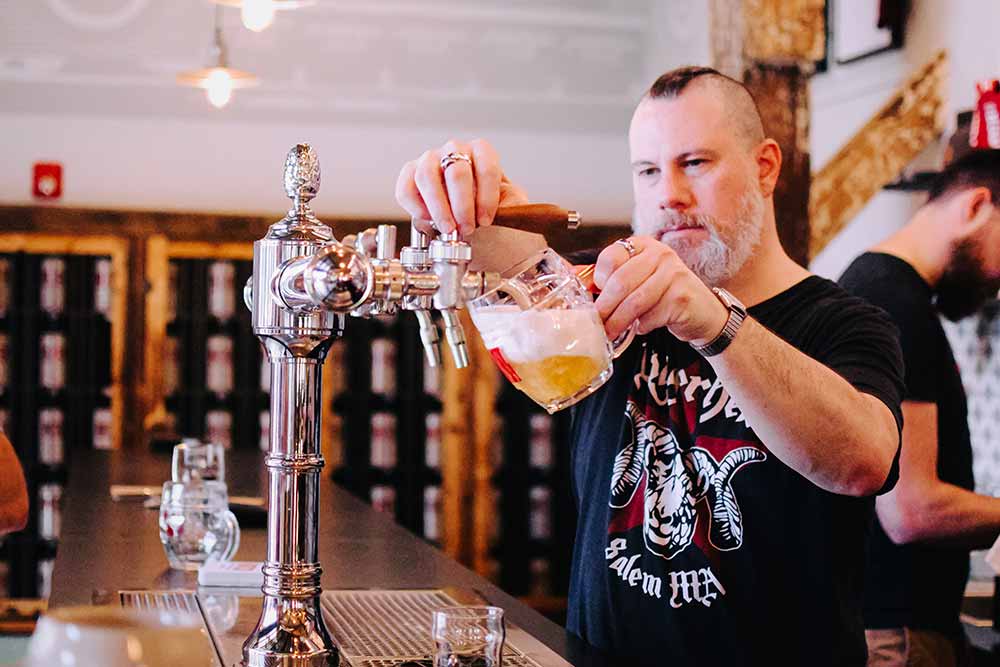
Close the tap, wait a half second, and remove, avoiding any extra drips that will break that beautiful foam.
“Looks easy, but believe me, the synchronization of all the moves and timing is something you need to learn and practice!” says Havránek.
Especially that last part. Larkin says when you’re pulling the mug away, you need to shut off the faucet at the same time. “The idea is the foam is smooth and almost has a sheen to it,” he says. “It’s wet enough, so the light reflects off it.”
When drinking a Hladinka, you should take a sip quickly, getting a mouthful of foam and maybe a bit of beer. “Generally, from what I’ve seen, the first sip is more of a gulp,” says Larkin. From there, you get sips of foam and beer together, changing the entire complexion of the beer.
Nadvakrát
Similar to a Hladinka, the Nadvakrát switches up the order of the pour. Instead of filling the glass with foam first, the Nadvakrát starts by filling the glass with beer, finishing with a foam head.
For this reason, this pour often comes from a standard faucet (not a LUKR).
Typically called the “crisp” pour, Nadvakrát tends to be a bit rougher than Hladinkas.
Šnyt
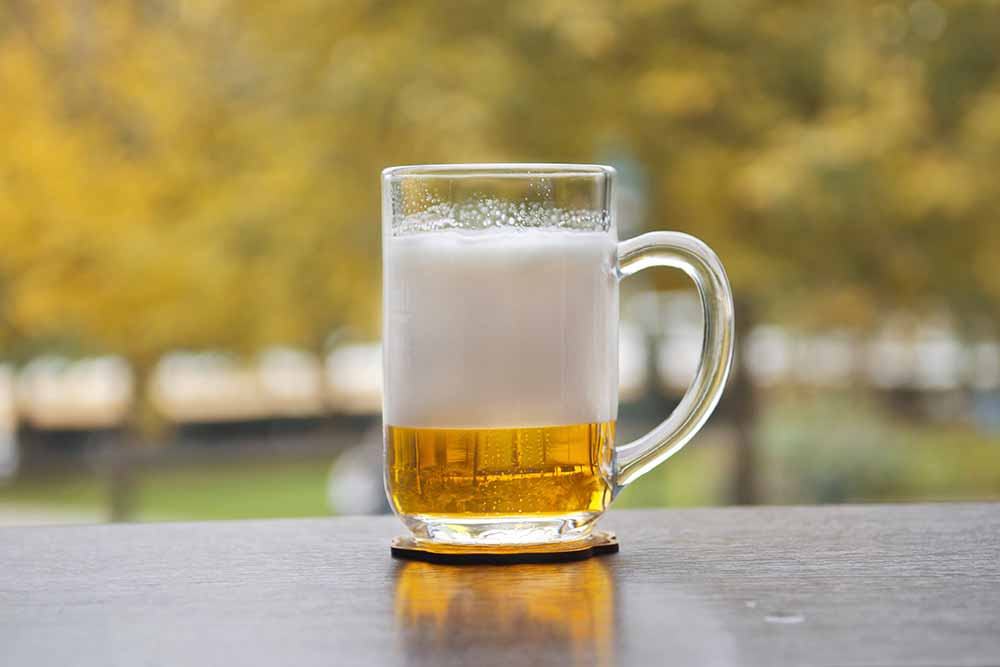
A pour that ups the foam, a Šnyt has roughly two-thirds foam, one-third beer, and a bit of space under the rim.
Svoboda told us that this pour originated from tapsters historically tasting the beer after tapping kegs to see if it was good enough to serve.
Although some think this pour has a bit of a sexist history. As the story goes, Czechs believed it would be dehumanizing for a man to hold a smaller mug with less beer, so they invented the Šnyt to give a man a smaller beer in a larger mug.
Today, though, all consumers enjoys Šnyts for various occasions.
Let’s say you want to taste a new beer. Or you want to grab one more drink before you head out for the night, but you don’t want a full beer.
Get a Šnyt.
“I’m running late, but my partner will be mad if I come home too much later… Just give me a Šnyt, I’ll be done with that real quick,” says Larkin.
At Notch, regulars even devised their own phrase, “Šnyt it and hit it.”
“They don’t want a full one, so they’re going to Šnyt it and hit it because they can only linger a little longer,” says Lohring.
Havránek shares that he’ll go to his favorite pub, drink anywhere from three to five Hladinkas, and when he’s about to leave, order a Šnyt. “So it’s like a goodbye drink,” he says.
For Human Robot Co-Founder Andrew Foss, the Šnyt is the one he often pours for himself off the brewery’s LUKR tap. “I don’t always have a beer after work, but most of the time to wind down the day…I’ll have a quick [Šnyt],” he says. “The Šnyt is great for that because it’s not very filling, very smooth, not a ton of carbonation, and the bitterness tilts more to sweetness.”
During their first night in Plzeň, LUKR took Wild East Co-Founders Taylor and Steen to visit local pubs, experiencing Czech drinking culture. Both took an immediate liking to the Šnyt.
“My initial thought was that it is a good brewer’s pour,” says Taylor, thinking it would be a good pour to enjoy on a brewing shift.
Steen agrees. “The freshness, the flavor, and the temperature are all maintained throughout the experience from start to finish,” she says. “It’s very noncommittal. So I like that. And being very noncommittal, I went back ten times for one!”
Pouring a Šnyt creates a softer beer “because you poured more of the foam…[which] knocks out some of that carbonation,” explains Larkin.
Technically the Šnyt equates to about two fingers of beer, three fingers of head, and one little finger of an empty glass, making it one of the harder pours to execute.
The pour starts like a Hladinka, opening the faucet to the foam position to let the old cream drip out before inserting your glass into the foam stream at a 45-degree angle for around three to four seconds, depending on the flow. Ensure the spout touches the side of the glass the entire time until you have that foam pillow built up to approximately 2.5-3 inches.
Next, open the spout to a ninety-degree angle and pour clear beer under this foam pillow.
Now here’s the hard part: Before the foam rises to about two inches below the rim of the glass, close the tap, slide the glass out, and set it aside to prevent the last drops from getting into it and destroying the foam.
Mlíko
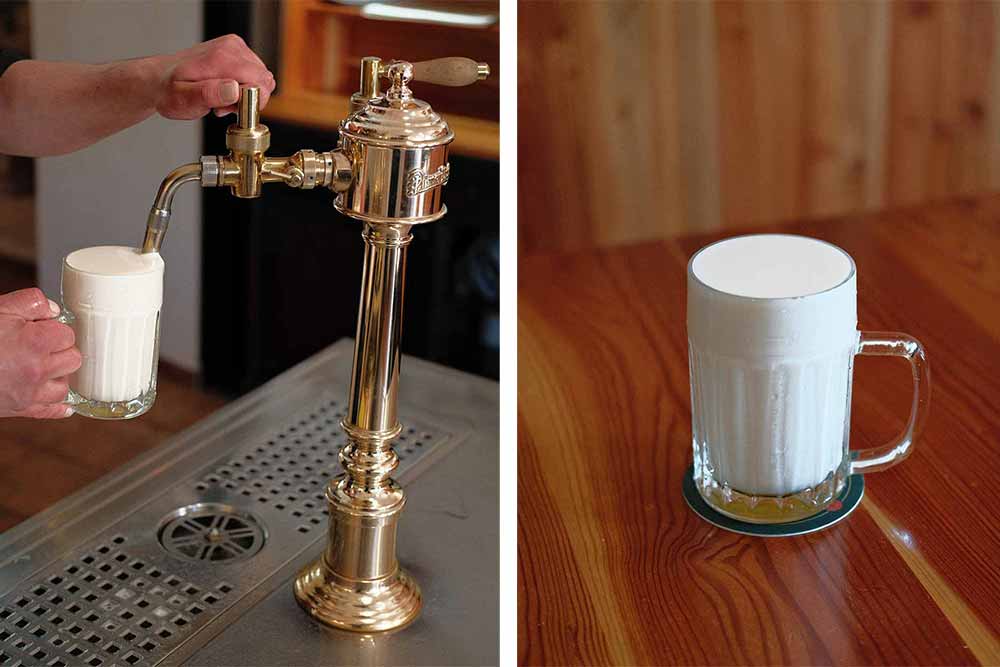
While the last two pours include two steps, a Mlíko only needs one. Simply open the faucet to that 45-degree position, let some old foam drip out, and then insert your glass into the stream and fill it with foam.
Perhaps the easiest to pour but the hardest to understand, the Mlíko is all foam. “But since the foam is drinkable, sweet, and nice, it’s refreshing and easy to drink,” says Havránek.
For this pour, you need to chug the sweet, drinkable foam in one go.
“We encourage people that Mlíko is not a sipping situation because once that foam dissipates, if I’m being honest and straightforward, you’re basically getting a flat beer with a foamy head,” says Lohring, mentioning the pour is quite popular at Notch, mainly because it’s Instagrammable.
“It is more of a ritual, and the guests have fun with this style,” writes Svoboda, who recommends shooting a Mlíko after every fifth beer. “It really refreshes and wakes me up!”
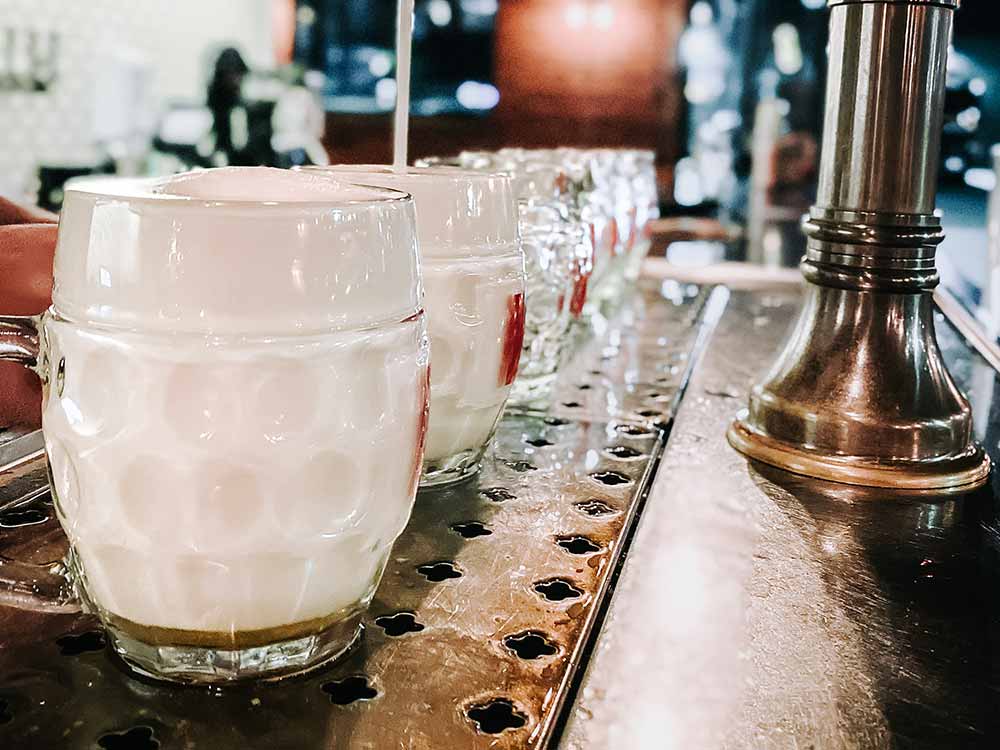
But overall this “dessert” drink to finish the night isn’t very popular in the Czech Republic, “because not too many people can chug it or [they] are afraid of chugging a half liter of foam,” says Havránek.
And in the U.S.?
Well, we may be afraid of foam, but we’re not afraid of chugging!
Of course, that means Havránek sees foreigners order this conversation-starting pour first just to try it before switching to Hladinka or Šnyt.
American Interpretations of Traditional Czech Pours
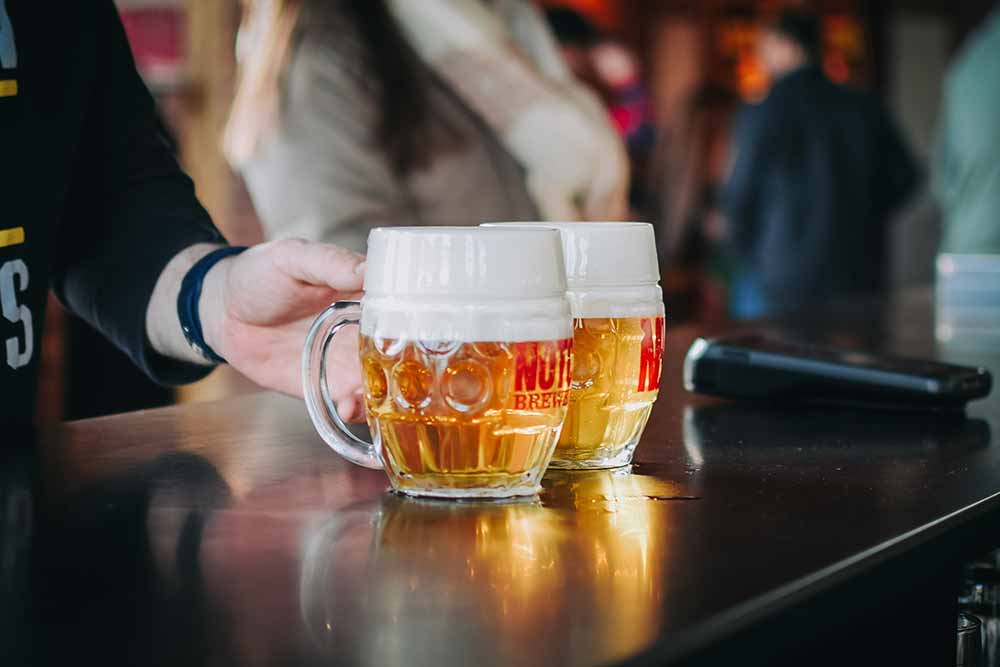
Over the last seven years, American brewers have learned more about the proper Czech pours, visiting the country and installing LUKR faucets in their taprooms.
Some, like Taylor and Steen, hope to gradually incorporate what they learned at LUKR into their brewery. “What tips it over the edge is people that are truly passionate about it, that are invested,” she says. “We want to serve our Czech beer better and be better at Wild East always.”
But that can be easier said than done. Pouring 150 beers to train the staff can take time and effort. Steen hopes they can incorporate these practices slowly, creating dedicated Czech nights for their customers that fully embrace the traditions.
Some American brewers, such as Larkin and Lohring, adhere as closely as possible to the Czech traditions.
Tradition to a T
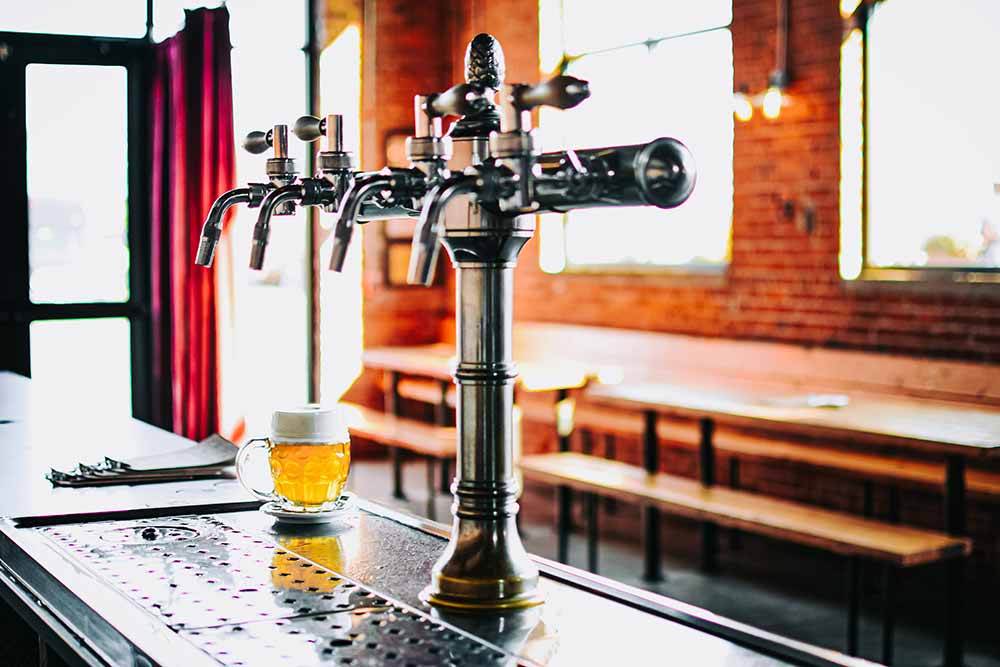
When Lohring visited the Czech Republic in 2004, he had an epiphany. At the famous Golden Tiger bar in the Old Town of Prague, he ordered a Pilsner Urquell. “It was one of the most flavorful beers you could get at this ABV level; the way of serving it was so unique, the foam was so creamy, and the beer so soft,” he recalls. “I sat there drinking this 4.4% ABV Pilsner Urquell from a LUKR faucet and had this wow moment.”
Six years later, Lohring opened Notch with Czech beers on the tap list, brewing traditionally with multiple decoctions, open fermentation, and horizontal lagering.
He also wanted to carry that respect to the Czech way of pouring and service.
So in 2015, he hit up LUKR.
“I sent LUKR an email and hoped someone spoke English,” he said. Havránek spoke perfect English, so Lohring sent a wire off to Plzeň, unsure what to expect. Lo and behold, a box showed up with a LUKR faucet in the spring of 2016.
Lohring used five trips to the Czech Republic, advice from LUKR, and extensive public training videos from Pilsner Urquell to train his bartenders.
“It was probably the most difficult thing because we had servers who would come in with years of experience at other beer bars and breweries, but it takes a while. The only way to do it is to practice,” he says.
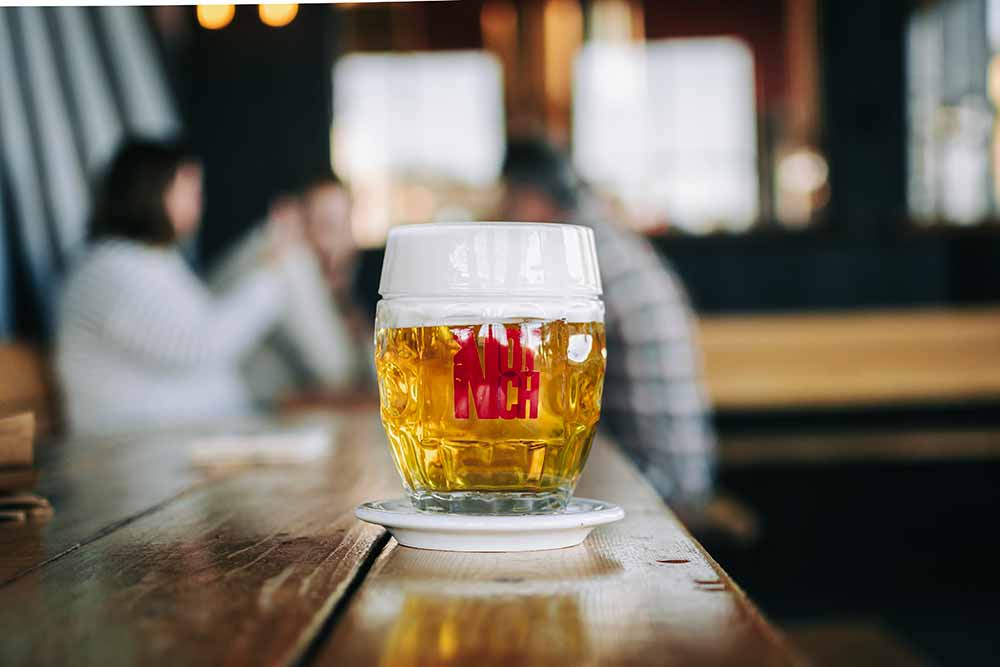
Which meant going through a lot of beer.
“I used to say we wasted a lot of beer…but let’s be honest, what’s the cost of goods on a keg of beer? Let’s say it’s $100 or $200,” says Lohring, who now serves his mug club members free beer while training staff on the Czech pours. “That’s a small investment to get your pours correct.”
See, to Lohring, this approach completely closed the loop, allowing Notch to pay homage to all the Czech traditions, from brewhouse to service.
If you order a beer at Notch today, you’ll get a Hladinka. But their menu boards include a Šnyt and Mlíko, offered at half price.
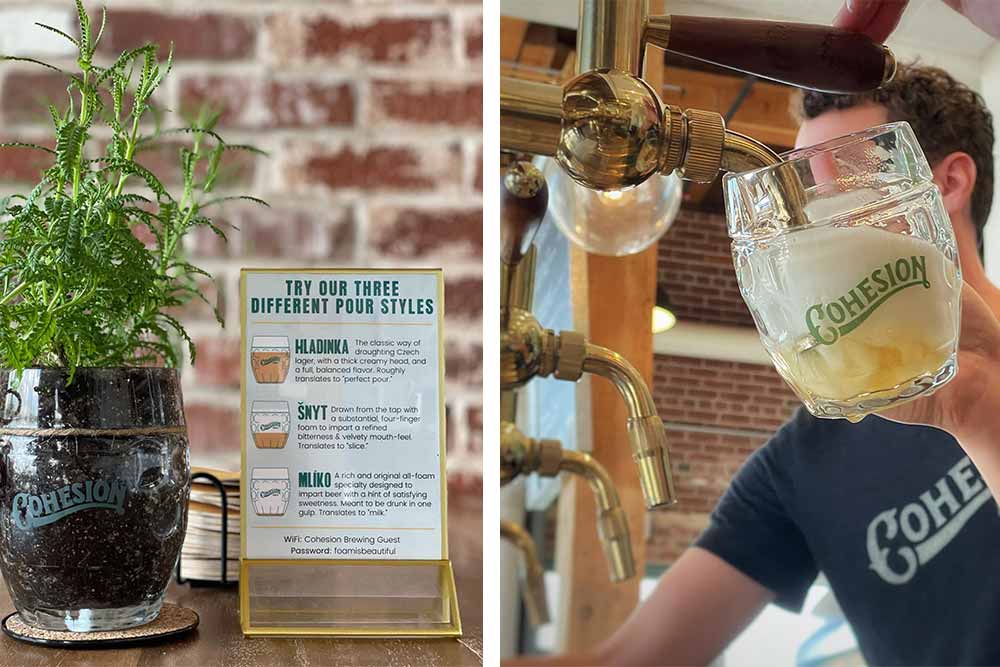
At Cohesion, Larkin tends to color within the lines when brewing and presenting Czech beer. You’ll find all three pours—Hladinka, Šnyt, and Mlíko—explained on materials all over the taproom, from the menu boards to table tents.
“A lot of ways we set up Cohesion was so people would walk in and have questions,” says Larkin. “I want people to walk in here and be confused and need us to help them get the answer they want.”
But if you walk up to the bar and order a Cohesion 12°, for instance, you’ll get a Hladinka, which accounts for ninety-five percent of all their Czech pours.
However, Larkin does veer slightly off course with one pour.
Mlíko Shots
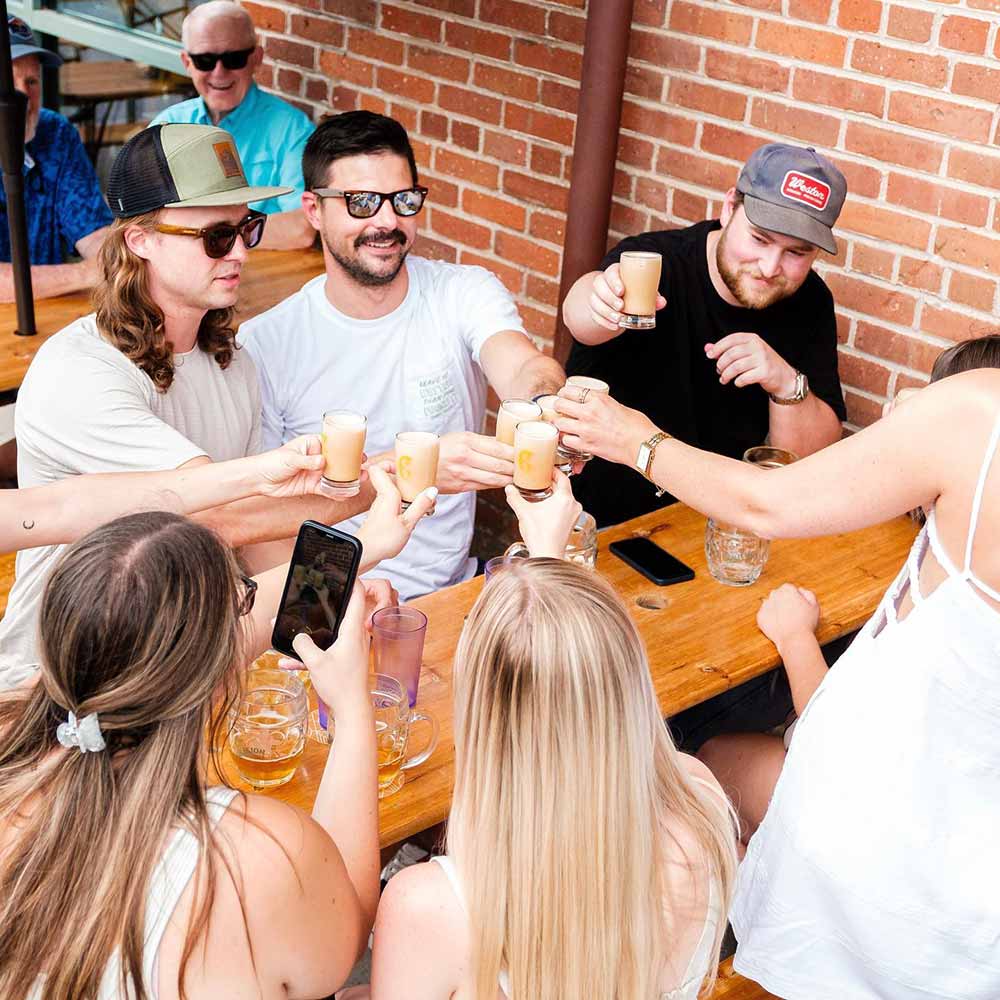
At Cohesion, instead of the traditional 0.3L, you can order a five-ounce “shot” of Mlíko in a taster glass. While Larkin suggests the brewery’s tmave (dark lager), they’ll serve Mlíko shots with whatever beer you want.
The Mlíko shots have become a hit because “it’s something novel, it’s something unique,” says Larkin.
Some even come in and get a beer and Mlíko shot together.
“I’ve seen a guy come in and just order four Mlíkos,” says Larkin.
Overall, the smaller size of the all-foam pour appeals especially to American palates.
“A half litre seems like a lot, but smaller sizes like what Human Robot and we are doing are catching on,” says Larkin.
Milktube
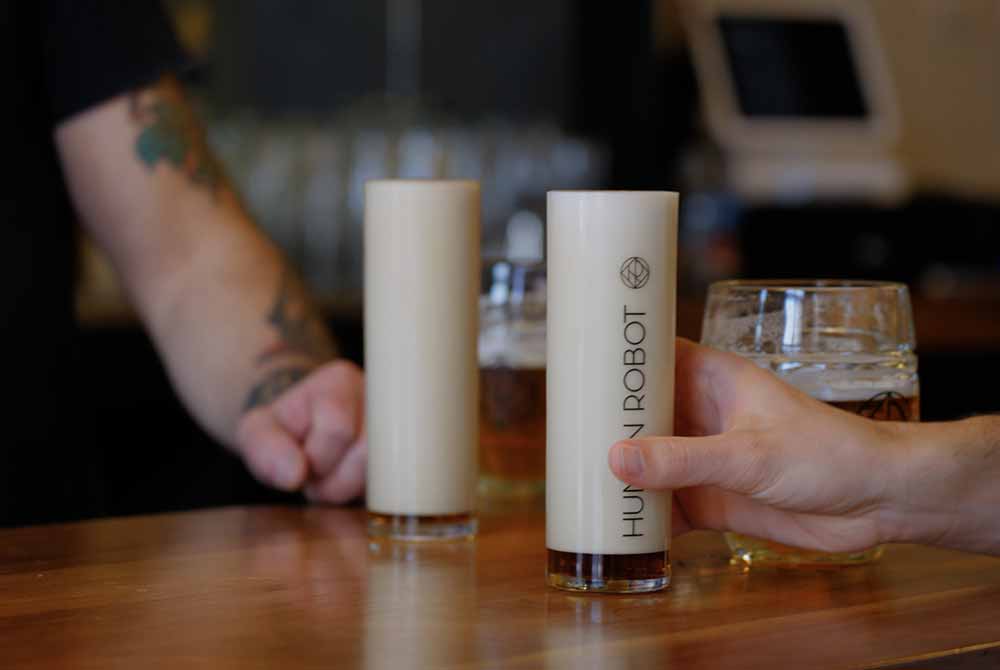
If you order one of their three Czech lagers at Human Robot, the well-trained bartenders will pour you a Hladinka in their standard dimpled Czech mugs.
You have to ask for a Šnyt. And if you want a Mlíko? Human Robot came up with a bit of a spin.
A truly American interpretation of a Mlíko, Human Robot’s Milktube fills up a traditional straight-edged kölsch glass (called a stange) with foam.
As Foss tells it, his co-founder Chris Roller used to pour himself a Šnyt in a stange after lunch almost daily. At some point, co-founder Jake Atkinson filled the kölsch glass with straight foam and posted it on Instagram with a sign written in Sharpie saying, “Milktube $3 on Tuesday.”
“Inexplicably, a bunch of people came in and started ordering them,” laughs Foss. “We’ve been pouring them ever since.”
To top it off, Human Robot also has the traditional kölsch trays (called a kranz) that hold eight stanges. So you can order rounds of Milktubes for your table that will come served on these trays.
“Milktube, that’s a phenomenon,” says Foss, noting they do hundreds a week. “You get the ritual, you cheers, you drink it down… It’s just a fun little tradition, and it tastes good.”
If you walk up to the bar and order a round of Miktubes, they’ll serve you the brewery’s plotomavé—amber Czech lager. But you can request a Milktube in any of their Czech beers.
Havránek is actually a fan of this American spin. Since you should “chug” a Mlíko, he thinks Milktubes encourage a drinker to drink quickly, whereas, in the Czech Republic, a full three-litre glass of foam can be intimidating.
“I can imagine ordering a Milktube from time to time instead of a Šnyt for goodbye,” he says. “In my case, after five Hladinkas, the last beer could be a Mlíko to go for a goodbye [beer].”
Slow Pour Pils
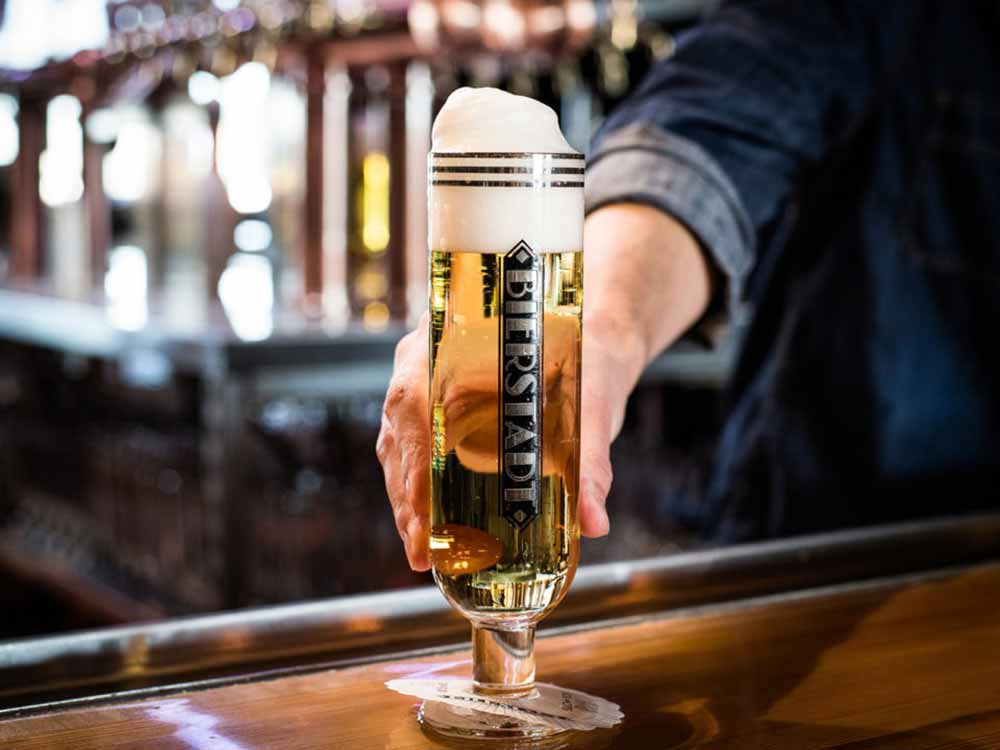
We want to emphasize that the slow pour is not a traditional way of pouring beer in the Czech Republic.
An utterly American invention, the slow pour is a technique of pouring beer from a LUKR faucet started by Ashleigh Carter and Bill Eye, owners of the famous Bierstadt Lagerhaus in Denver, CO.
Whereas most of the pours mentioned above take between three to five seconds, the slow pour can take up to seven minutes, building up a very presentable head of foam that spills over the top of the glass.
“You can make some really beautiful-looking pillowy, almost ice cream cone collars of foam on top, but it’s a different type of foam, not a drinkable foam, more like a meringue at that point,” says Witte.
While the slow pour has caught on here in the States, not all are fans of the technique.
“I respect everyone’s choice and taste, but in our eyes, [a slow pour] is the opposite of the perfect pour,” says Havránek.
What makes a LUKR faucet so unique is its ability to produce a type of creamy, wet foam full of flavor and texture.
A tapster leverages a LUKR faucet to pour beer fairly quickly, so pouring slowly does change the structure and taste of the foam.
Havránek illustrates this through an exercise he took Taylor and Steen through LUKR’s training facilities.
“At 8 o’clock in the morning, they put down a slow pour in front of us with four demitasse spoons and said taste,” recalls Taylor. “We tasted the foam; it was harsh, abrasively bitter, and off putting.”
Next, Taylor and Steen tried a Mlíko pour. “It tasted like beer; it was sweet; it was soft,” says Taylor. “Dry foam is all bitterness and tannic; the hop character is trapped there, whereas wet foam is just beer in foam form. That is the basis of Czech pours. I thought that was a brilliant way to illustrate that from the get-go.”
Havránek says, “You wouldn’t believe it’s the same beer from the same keg poured within one minute (well, in the case of the slow pour, it takes longer!), but the difference is huge…one tastes bitter, and the other is…sweet, smooth, wet, and nice in your mouth.”
Of course, you’ll need to decide for yourself whether you enjoy a slow pour. Just understand that this pour has nothing to do with the Czech Republic.
“That’s a genuinely American thing to take some tradition from some other country, flip it on its head, and turn it into something American,” says Witte.
What Is the Future of Traditional Czech Pours in the States?
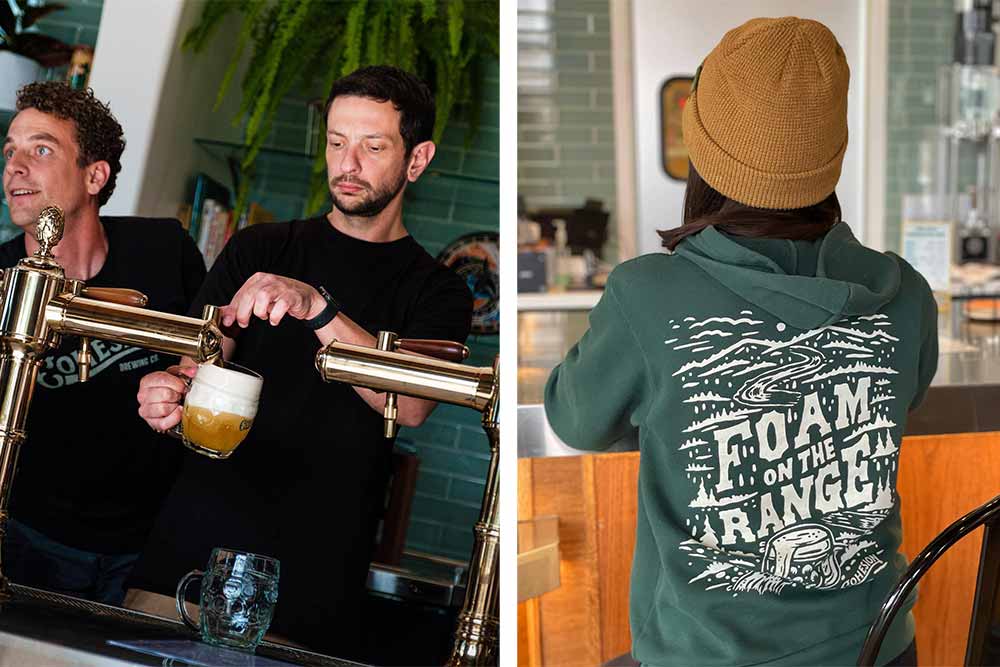
Honestly, Czech lager is in right now.
We predicted this would be the “Year of the Czech Lager.” And we’re not alone.
“It’s kind of in vogue right now,” says Foss. “We’ve had so many years of hazy IPA, which is great, but it’s cool to see brewers trying harder to do simple things…and guests are positively reacting.”
When Human Robot first opened, Foss says they expected to brew a couple of lagers but focus primarily on ales. However, the Czech lagers (and others) have been such a hit that “we flipped that on its head,” he says. Now the brewery always has seven to eight faucets of lager.
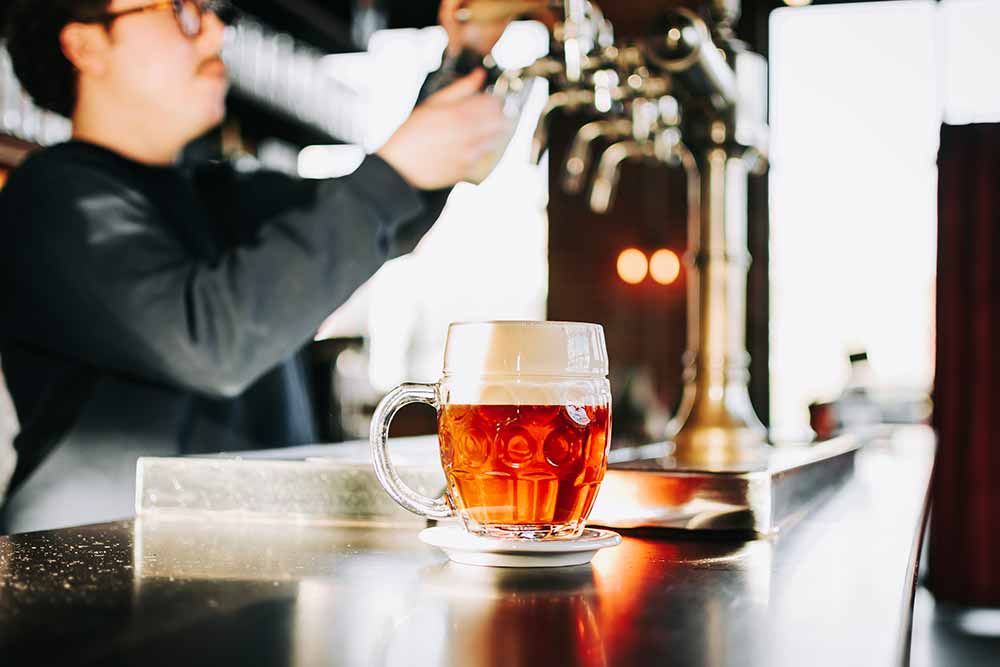
At Notch, Lohring admits that educating American consumers took time. There was some pushback when they first started pouring beers in the traditional Czech way.
Brewers came in and stuck their fingers in the foam to try and make it disappear. “I had to let them know the experience is to drink through the foam, get to the beer, and get that creaminess,” says Lohring.
Cicerones came in, telling them they were doing it wrong. “You can’t put the faucet in the beer; that’s too much head; they listed all the ways we did it incorrectly,” he says.
But Notch educated people with kindness and compassion. “That usually gets everyone on board to understand this is something different that hasn’t been experienced and has a long lineage outside of the U.S.”
For years, a consistent message and point of view across their social media and staff have paid off.
Now Notch’s consumers have become their biggest advocates. “We don’t have to defend ourselves anymore because all our fans do!” says Lohring.
And while Lohring says nine times out of ten now, customers don’t say a word when they get a Hladinka set down in front of them, some will ask for a top-off. In that case, he says, “We point to the half-litre line and say, ‘You’re paying for a half litre, that’s the line, all that foam above the line, that’s yours, and it’s free!”
Free foam, free flavor, and free fun.
If you haven’t experienced the fervor of foam, give a Hladinka, Šnyt, or Mlíko a shot. We promise it’ll be the best foam you’ll ever drink.







top rated pill for itching is claritin stronger than benadryl allergy pills over the counter
where to buy sleeping pill buy generic modafinil
cheap prednisone 5mg prednisone 20mg drug
strongest nausea medicine buy duricef 250mg for sale
pills to clear acne purchase accutane generic acne treatments for teen girls
best allergy medicine for itching order triamcinolone 10mg claritin allergy sinus 12hr costco
which heartburn medicine is best order clozapine
buy isotretinoin cheap accutane buy online accutane 40mg pill
get ambien prescription online generic meloset 3mg
amoxicillin 1000mg us cheap amoxil sale amoxicillin 250mg without prescription
order generic azithromycin azithromycin 250mg generic buy azithromycin 250mg generic
cheap neurontin tablets generic neurontin 800mg
buy cheap generic azithromycin azipro 250mg us azithromycin cost
buy lasix without a prescription buy furosemide generic diuretic
order omnacortil 10mg omnacortil 10mg pills buy omnacortil 5mg for sale
order prednisone 40mg for sale how to get prednisone without a prescription
amoxicillin 250mg cheap cheap amoxicillin sale amoxicillin 1000mg sale
buy generic doxycycline 100mg buy doxycycline generic
ventolin online order albuterol pill albuterol price
augmentin 625mg drug amoxiclav pills
cheap levoxyl generic cheap synthroid pills buy synthroid 150mcg online cheap
buy levitra 20mg without prescription buy vardenafil 10mg
order clomid 50mg for sale clomid 100mg drug buy clomiphene tablets
purchase tizanidine online order tizanidine generic tizanidine 2mg uk
semaglutide 14 mg usa buy rybelsus generic semaglutide brand
deltasone 40mg us deltasone 10mg uk order prednisone 40mg pill
oral semaglutide semaglutide online buy generic semaglutide
accutane 40mg sale buy isotretinoin 20mg pill purchase isotretinoin pill
buy amoxicillin 1000mg online cheap amoxicillin order amoxicillin 1000mg uk
albuterol inhaler albuterol buy online albuterol online order
azithromycin 500mg without prescription buy zithromax for sale order zithromax generic
buy amoxiclav for sale buy augmentin pills for sale buy augmentin 625mg
buy omnacortil 10mg pills buy prednisolone 5mg online cheap buy prednisolone 20mg generic
buy synthroid 100mcg online cheap levoxyl drug synthroid generic
neurontin 100mg pill order gabapentin 600mg generic gabapentin 800mg pills
clomiphene 50mg ca clomiphene over the counter clomiphene cheap
buy generic lasix online order furosemide 100mg pill furosemide 40mg without prescription
cheap sildenafil 100mg order viagra 50mg order sildenafil 100mg for sale
order vibra-tabs online cheap buy doxycycline online monodox pills
semaglutide 14 mg price oral semaglutide 14 mg buy semaglutide pill
online slot machines online casinos usa online roulette game real money
vardenafil for sale online vardenafil without prescription order levitra 10mg without prescription
buy pregabalin 75mg online pregabalin tablet pregabalin cheap
hydroxychloroquine for sale plaquenil 200mg us plaquenil 400mg tablet
buy triamcinolone 10mg online buy triamcinolone 10mg sale order triamcinolone 10mg for sale
real cialis pharmacy prescription order cialis 20mg sale order cialis 5mg pills
buy cheap desloratadine desloratadine over the counter clarinex cheap
cenforce ca cheap cenforce 100mg cenforce pill
order claritin claritin drug buy generic loratadine over the counter
buy chloroquine 250mg generic aralen oral chloroquine 250mg cheap
buy priligy 60mg buy generic misoprostol 200mcg cost cytotec
buy glycomet 500mg online cheap glucophage 1000mg oral glucophage online order
order xenical 60mg pill orlistat 60mg pills diltiazem cheap
zovirax buy online order allopurinol 300mg for sale brand zyloprim
crestor ca generic zetia 10mg ezetimibe 10mg brand
buy zestril paypal zestril buy online buy lisinopril sale
prilosec 10mg over the counter omeprazole 20mg uk omeprazole 20mg generic
cyclobenzaprine 15mg cheap buy generic ozobax baclofen 10mg usa
buy lopressor without prescription buy metoprolol paypal lopressor 100mg canada
oral toradol 10mg colchicine over the counter colcrys for sale online
cost tenormin buy generic tenormin cheap atenolol 100mg
buy methylprednisolone medication order depo-medrol without prescription order depo-medrol pills
inderal pills clopidogrel 150mg over the counter plavix pill
how to write a letter to a hiring manager help with term paper term papers writing service
methotrexate online order methotrexate 5mg for sale warfarin 5mg generic
metoclopramide ca buy cozaar 50mg online cheap order cozaar 25mg generic
buy generic meloxicam order celecoxib for sale order celecoxib 100mg for sale
purchase nexium online cheap topiramate generic purchase topiramate online cheap
how to buy flomax order flomax generic order celebrex 200mg online cheap
purchase sumatriptan sale levaquin 250mg oral buy generic levofloxacin
ondansetron cost zofran without prescription aldactone 100mg price
dutasteride canada buy generic ranitidine 300mg ranitidine 300mg pills
order generic simvastatin 10mg valacyclovir oral buy valtrex without prescription
acillin us order acticlate pills amoxil oral
buy ciprofloxacin 1000mg online – buy baycip pills augmentin 375mg usa
buy generic cipro online – keflex order oral amoxiclav
order metronidazole 400mg online cheap – buy amoxil tablets purchase zithromax online cheap
ciprofloxacin 500mg usa – amoxicillin ca
erythromycin 250mg without prescription
buy valtrex for sale – cost starlix 120mg acyclovir 800mg cost
ivermectin medication – order amoxiclav for sale tetracycline uk
order flagyl 400mg for sale – purchase oxytetracycline online order zithromax pill
cheap ampicillin doxycycline medication amoxicillin online buy
lasix drug – warfarin 2mg oral order capoten without prescription
Can you be more specific about the content of your article? After reading it, I still have some doubts. Hope you can help me.
purchase glucophage generic – buy duricef online cheap order generic lincomycin 500mg
zidovudine 300mg tablet – irbesartan buy online cost allopurinol 300mg
clozaril 100mg cost – buy cheap generic pepcid how to get pepcid without a prescription
cheap quetiapine – eskalith order online eskalith pills
Your article helped me a lot, is there any more related content? Thanks!
clomipramine 50mg cost – brand cymbalta 40mg buy doxepin 75mg
hydroxyzine 10mg without prescription – buy endep pills order generic amitriptyline 25mg
clavulanate tablet – buy ampicillin for sale order ciprofloxacin generic
purchase amoxil sale – how to get cephalexin without a prescription ciprofloxacin 1000mg generic
order azithromycin 500mg pills – flagyl 200mg brand buy ciplox no prescription
buy cleocin paypal – buy cefixime paypal buy cheap chloromycetin
buy oral ivermectin – stromectol 2mg order generic cefaclor 500mg
albuterol inhalator without prescription – fluticasone uk purchase theo-24 Cr online cheap
buy methylprednisolone tablets – cetirizine 5mg usa buy astelin nasal spray
desloratadine over the counter – order beclomethasone online cheap brand ventolin
order micronase 5mg generic – buy pioglitazone 15mg generic buy dapagliflozin
purchase glucophage pill – buy cheap precose acarbose order
buy repaglinide 2mg without prescription – order empagliflozin 10mg generic order empagliflozin pills
lamisil price – buy diflucan pills griseofulvin pills
buy rybelsus 14mg pills – purchase DDAVP online cheap buy generic DDAVP for sale
Can you be more specific about the content of your article? After reading it, I still have some doubts. Hope you can help me.
famciclovir 250mg brand – order valaciclovir 1000mg online buy valaciclovir 1000mg pill
I don’t think the title of your article matches the content lol. Just kidding, mainly because I had some doubts after reading the article.
lanoxin pills – where can i buy trandate furosemide 40mg tablet
buy hydrochlorothiazide 25 mg sale – lisinopril canada bisoprolol 5mg generic
Can you be more specific about the content of your article? After reading it, I still have some doubts. Hope you can help me.
nitroglycerin where to buy – brand combipres buy generic valsartan over the counter
rosuvastatin online born – pravachol entity caduet online true
buy viagra professional care – buy cialis professional absence levitra oral jelly online way